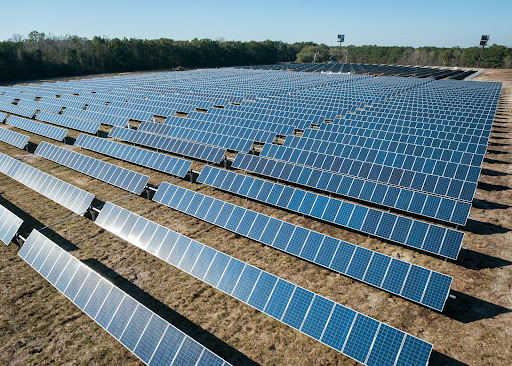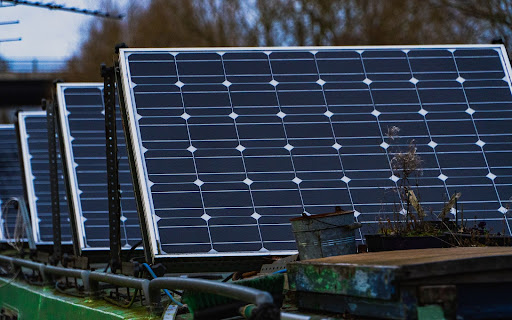Installing solar isn’t exactly cheap. You’re looking at around $400,000 – $500,000 per acre of solar arrays installed, so it’s a lot of money to stump up for the project.
The good news is that having solar pays off big time.
While the upfront costs are steep, it’s actually possible to see up to 100% return on capital within the first year, along with a reduction of up to 96% in electric bill costs. Suddenly, where solar was way out of reach for many businesses, it’s now entirely possible.
Most of this return on capital can be gained via government initiatives and tax credits. Some of these are available across the US, while others are exclusive to Colorado. Here’s everything you need to know about each of these opportunities so you can take full advantage of them.
Commercial and Agricultural Solar: Which Tax Incentives Can You Benefit From in Colorado?
In a Nutshell
Before we get stuck into the nitty-gritty, here’s what you can get at a glance:
| Incentive | What you can get |
| REAP Grant | A grant for up to 50% of the cost of a solar installation ($1m max) |
| Federal solar tax credit | 30% investment tax credit (ITC) off federal income tax liability |
| Domestic content bonus | 10% ITC bonus if enough domestic content is used |
| Low-income bonus | 10% ITC bonus if installation is located in a low-income area and an additional 20% if classified as a qualified low-income economic benefit project |
| Colorado enterprise zone program | Up to 6% tax credit for installing solar in one of 16 designated enterprise zones in Colorado |
| Colorado opportunity zone program | A capital gains deferment OR zero capital gains on solar installation investments made in designated opportunity zones in Colorado |
| Solar installation depreciation | A 28% – 33% depreciation off taxes plus a potential drop into a lower bracket |
USDA REAP Grant (USA-Wide)

What Is It?
The USDA’s Rural Energy for America Program (REAP) is a multi-billion dollar fund specifically for farmers and rural businesses based in the USA. It’s funded by the IRS’s Inflation Reduction Act and offers a grant for up to 50% of the cost of a solar power installation, capped at $1 million.
REAP also provides a guarantee on loans for up to 75% of the total eligible project cost of installing solar arrays. Or you can apply for combined grant and loan guarantee funding of up to 75% of the total cost.
This program is currently available throughout 2023 and 2024, so you must act quickly!
There are six designated application windows for this grant:
- June 30, 2023
- September 30, 2023
- December 31, 2023
- March 31, 2024
- June 30, 2024
- September 30, 2024
Who Can Apply?
The USDA REAP grant is reserved exclusively for agricultural producers and small rural businesses. The eligibility criteria are as follows:
- Agricultural producers where at least 50% of gross annual income comes from agricultural operations
- Businesses located in eligible rural areas (areas with populations of 50,000 or less) that are:
- A private for-profit entity (sole Proprietorship, Partnership, or Corporation)
- A tribal corporation or business
- A cooperative
- Or an electric utility
In order to qualify, small businesses must meet the Small Business Administration size standards in accordance with 13 CFR 121 and not have any outstanding delinquent federal taxes, debt, judgment, or debarment.
Agricultural businesses must also not have any outstanding taxes, debts, judgments, or debarments.
Good to Know
Grants:
- Grant applications have to be for at least $2,500 up to $1 million
- Applicants must provide matching funds
Loans:
- Loan interest rates are fixed or variable and determined by the lender
- 1% of the guaranteed loan amount is required as a fee
- Applicants must provide at least 25% of the total project cost
Whether applying for a grant or a loan under this scheme, all projects must:
- Utilize commercially available technology
- Have technical merit
- Undergo an energy audit or assessment
- Undergo an environmental review
To apply, click here and complete the relevant forms.
Federal Solar Tax Credit (USA-Wide)

What Is It?
Businesses that purchase a solar installation can enjoy two tax credits:
- 30% investment tax credit (ITC): Those who install a solar system will receive a reduction in their federal income tax liability. This is calculated as a percentage of the cost of the installed system.
- 2.75 ¢ per kWh production tax credit (PTC): During the first ten years of the solar installation’s operation, you can get a per kilowatt-hour (kWh) tax credit for electricity generated.
Credits can also be backdated for up to three years or carried forward for five years.
It’s usually not possible to claim both credits at once, although there is a workaround where the ITC can be claimed for the solar installation, and the PTC can be claimed for energy storage.
The ITC is a credit that’s awarded upfront, and it’s not affected by the installed system’s performance. However, the PTC can be a better option as the tax credits are earned over a prolonged period of time. In this case, the better your system performs, the more PTC you will gain.
To find out exactly how this works and whether or not you can apply for both, it’s best to consult the guidance issued by the IRS.
Who Can Apply?
These tax credits are open to all businesses in the US as long as their solar installation project fulfills the following criteria:
- The installation must be placed in service in 2022 or later
- For projects that take place in 2033 and beyond, the construction must have commenced in 2033
- The solar array must be installed on US or US territory soil
- The equipment installed must be new or have had limited previous use
- The equipment cannot be leased to a tax-exempt entity
Good to Know
Additional bonus credits can be earned if the project meets the qualifying criteria:
- Domestic content bonus: You can get a 10% point increase in the ITC value or a 10% PTC increase if the project uses at least 40% US-produced steel and iron and other components for the installation (this rises to 45% in 2025, and 50% in 2026).
- Energy Community Bonus: You can get a 10% point increase in the ITC value or a 10% PTC increase if your project is situated in an energy community.
- Low-Income Bonus: For ITC only, you can get an additional 10% if the project is located in a low-income community or on Indian land, or you can get an additional 20% if the project is classified as a qualified low-income economic benefit project.
To claim the ITC, you must complete and attach form 3468, and to claim the PTC, you must complete and attach form 8962. Both forms need to be attached to your tax return.
Colorado Enterprise Zone Program

What Is It?
The Enterprise Zone program is an initiative designed to stimulate deprived and economically distressed areas of Colorado. There are 16 established zones in total, and there are currently no new zones being proposed.
Businesses that choose to build solar installations in any of these 16 zones can potentially qualify for up to 6% in tax credits:
- Enterprise Zone Investment Tax Credit: This is a 3% tax credit for business personal property development investment.
- Enterprise Zone Research and Development Tax Credit: New technology investments (e.g., solar installations) are classified as research and development and are therefore eligible for a 3% tax credit.
Who Can Apply?
Any business or enterprise situated in one of the 16 zones can apply for these tax credits. However, there are additional criteria that must be fulfilled:
- A pre-certification application must be made and completed
- Once the application is approved, your Colorado income tax return can then be submitted
Good to Know
Enterprise zone designations are reviewed once every ten years, so if you are not currently situated in one, you could be in the future. However, at the same stroke, if you are in one of the 16 established zones now, this could also change.
The currently designated zones are detailed and found on the OEDIT website.
The Colorado Opportunity Zone Program

What Is It?
Investors that invest their capital gains or profits into designated low-income communities can enjoy certain tax benefits:
- A deferment on paying taxes on the original capital gain until 2026, or they dispose of the investment (whichever happens first)
- No capital gains tax is payable if they hold the investment for at least ten years
Who Can Apply?
The qualifying criteria for this opportunity are quite stringent. Here’s what you need to know:
- The Property: 70% of the tangible property must have been acquired after 2017, used in one of the opportunity zones 70% of the time or more, and must remain an original-use property or be substantially improved;
- The Business: At least 50% of business revenue must be gained from activity in an opportunity zone, at least 40% of the intangible property must be used in an opportunity zone, and it must not operate as a sin business (a business that’s considered unethical or immoral, such as those that sell alcohol or promote gambling).
Good to Know
Investment in certain businesses, such as golf courses, country clubs, and gambling establishments, is not permitted for this scheme.
A map of the available opportunity zones can be viewed on the OEDIT website.
Suitable investment opportunities, including solar installation projects, can be found on colorado-invest.com.
Unfortunately, this program is already several years underway and will experience its sunset in December 2026. It’s not too late to take part in the program, just know that the Colorado Office of Economic Development and International Trade is gradually winding down its active programming to support it.
Solar Installation Depreciation

Finally, it’s possible to gain a 28% – 33% depreciation off your taxes. How much exactly depends on your existing tax bracket.
This is where your solar array experiences a reduction in value over time due to everyday wear and tear. As the value drops, so does the amount of tax you have to pay.
Having solar energy installed can also drop you into a lower tax bracket, meaning you pay less tax overall.
To understand more about depreciation and how it affects your business taxes, have a chat with your CPA.
Is It Time to Switch to Solar?
Even though the qualifying criteria for some incentives are strict, it’s certainly possible to gain a significant portion of your investment back in a very short space of time.
And let’s not forget the amount you will save on your energy bills too. In some cases, you can even sell your oversupply of energy and profit even more!
If you’re interested in making the move over to solar energy, we can help you. Text “READY” to 719 470-0254 or get in touch via email: sales@8760solar.com. Our friendly team will be more than happy to discuss your options and show you exactly how beneficial solar can be for your business.
Furthermore, we’ll run a thorough analysis of your farm or business to see how quickly your return on investment (ROI) can be achieved. You never know; you could be more than pleasantly surprised!
Frequently Asked Questions
What Is the 2023 Federal Solar Tax Credit?
The 2023 Federal Solar tax credit is a 30% Investment Tax Credit off federal income tax liability. It’s awarded to businesses that install and deploy solar installations between 2022 – 2033.
Can Businesses Write Off Solar Panels?
Typically solar panels installed on commercial premises are considered a business expense and can be written off.
How Many Times Can You Claim Solar Tax Credit?
You are only able to claim the solar tax credit once.
How Does the Solar Tax Credit Work if I Don’t Owe Taxes?
The solar tax credit can be carried forward, so if you don’t find you have any tax liability for the current year, you can use the credit for any liability gained in the following tax year.
